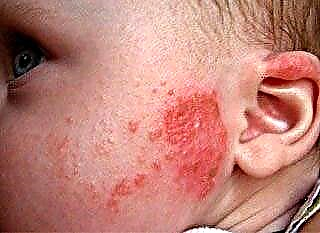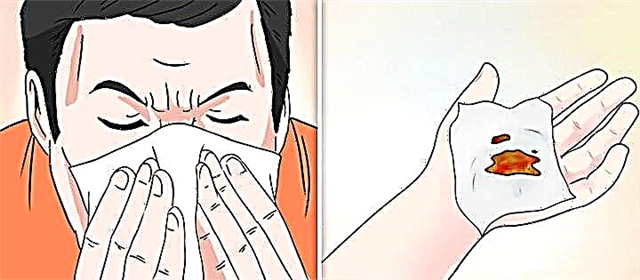According to statistics, otitis media in a child in 87% of cases is a consequence of an infectious lesion of the nasopharynx. At the age of 3-4 years, every second child suffers an ENT disease, which is associated with the low resistance of the body and the anatomical features of the structure of the hearing aid.
Inflammatory processes in the ear cavity lead to blockage of the auditory canal, which prevents the outflow of serous effusions. As a result, a large amount of exudate accumulates inside the ear, which provokes hearing impairment and the appearance of pain. Ineffective or untimely therapy for ear pathology leads to the development of formidable complications that require hospitalization and surgery.
Pathogenesis

The development of catarrhal processes in the ear cavity often begins with dysfunction of the Eustachian tube. Its obstruction may be due to mechanical obstruction, i.e. hypertrophy of the pharyngeal tonsil or adenoids, or functional disorders provoked by the ineffectiveness of opening the mouth of the tube. In both cases, a low vacuum is created inside the ear, which leads to intense production of transudate.
If the ENT disease occurs on its own, and not as a complication of a general infection, the transudate does not contain pathogenic flora. However, due to a decrease in local immunity in the ear cavity, opportunistic microorganisms begin to actively develop, which is the reason for the opacity of the liquid secretion and its transformation into purulent masses.
Inflammation in the mucous membrane of the ear cavity leads to the appearance of purulent foci that disrupt tissue trophism. Morphological changes in the mucous epithelium affect the auditory function, as a result of which conductive hearing loss develops. Even after perforation of the ear membrane and the outflow of pus from the ear, fibrin threads remain on the auditory ossicles. Its hardening leads to a limitation of the mobility of the auditory ossicles, which affects the quality of the conduction of sound signals and, accordingly, hearing acuity.
Etiology
Acute otitis media in children is often provoked by pathogens, in particular Haemophilus influenzae, pneumococci, staphylococci, Proteus, etc. They penetrate into the ear cavity by the tubular route, i.e. through the auditory canal, located between the nasopharynx and the middle ear.
There are several important factors that contribute to the development of ear pathology in childhood:
- genetic predisposition. In the course of medical research, it was found that the incidence of ear pathologies is 3 times higher in children in whose families parents and close relatives suffered from otitis media;
- immunological disorders. Immunodeficiency states and the absence of acquired immunity contributes to the development of pathogenic flora inside the mucous membranes of the upper respiratory tract;
- anatomical features. The pharyngeal opening of the auditory tube is almost at the level of the hard palate, which creates suitable conditions for the penetration of infection from the oropharynx into the ear cavity. In addition, the Eustachian tube in children has a larger inner diameter, so its resistance to pathogens is lower than in adults;
- physiological factors. Breastfeeding of a baby almost always takes place in a horizontal position, which increases the risk of food entering the ear canal.
Premature babies are more susceptible to otitis media, which is associated with long-term transformation of myxoid tissue in the ear cavity into the mucous membrane.
Symptoms
To diagnose the presence of catarrhal processes in the ear simply by the pain syndrome that occurs at the initial stages of the development of pathology. Due to inflammation of the ear membrane and the accumulation of fluid in the ear, hearing acuity decreases, as a result of which autophony occurs, i.e. resonating your own voice in your head. Infectious inflammation is almost always accompanied by fever and general malaise.
The classic signs of the development of the disease include:
- earache;
- hearing loss;
- ear congestion;
- a sensation of fluid overflow in the ear;
- discharge of serous or purulent exudate from the ear canal.
It should be noted that the severity of symptoms largely depends on the age of the patient. In infants, it is more difficult to diagnose ENT disease; the presence of middle ear catarrh is usually signaled by the following signs:
- poor sleep;
- concern;
- irritability;
- constant crying;
- lack of appetite;
- diarrhea.
The increasing intoxication of the body leads to a deterioration in well-being, as evidenced by short-term convulsive contractions of the eye muscles. Over time, a transparent ichor begins to flow from the ear, after which the child calms down. The appearance of exudate indicates perforation of the membrane and evacuation of fluid from the ear.
If there are perforations in the ear membrane while bathing the child, it is necessary to exclude the possibility of water entering the ear canal.
Primary treatment
Traditional therapy of bilateral acute otitis media in a child involves the use of medication. Depending on the causative agent of ENT disease, antifungal and antibacterial drugs are used to relieve inflammation. To alleviate the course of the disease, symptomatic medications are used that eliminate pain, itching, signs of intoxication, etc.
Primary treatment of pathology involves the use of the following means:
- NSAIDs (Efferalgan, Ibuprofen) - relieve inflammation and pain, which leads to a decrease in mucosal edema;
- immunostimulants ("Derinat", "Immunal") - strengthen the immune system, which helps to suppress the activity of the pathogenic flora in the lesions;
 antibiotics ("Clavulanate", "Roskithromycin") - kill bacteria, thereby eliminating inflammation and tissue edema;
antibiotics ("Clavulanate", "Roskithromycin") - kill bacteria, thereby eliminating inflammation and tissue edema;- antihistamines ("Ketotifen", "Fenkarol") - eliminate local manifestations of the disease: itching, pain and swelling;
- ear drops ("Anauran", "Garazon") - relieve inflammation and disinfect the ear cavity.
It is impossible to use "Aspirin" in pediatric therapy, which is associated with the risk of Reye's syndrome.
With the development of catarrhal processes, warm compresses can be applied to the sore ear. For these purposes, semi-alcoholic compositions and "Burov's Liquid" are used. Warming up promotes expansion of capillaries and more intense blood circulation in the affected tissues. Thus, the trophism of tissues is improved, which contributes to their regeneration.
Important! With suppuration, it is impossible to use warming procedures, since this will only accelerate the spread of pus inside the ear cavity.
Myringotomy
The eardrum in children is several times thicker and denser than in adults. This prevents its perforation at the stage of perforation, which increases the risk of evacuation of pus into the inner ear. When purulent exudate enters the ear labyrinth, severe complications develop, such as labyrinthitis, meningitis, sepsis, etc. To prevent such consequences, surgery is sometimes required.
A myringotomy is a simple procedure in which a small incision is made in the ear membrane. Thanks to the hole in the tympanic cavity, the pressure is normalized, which leads to the rapid evacuation of pus from the middle ear. A simple yet effective operation can provide immediate relief from the symptoms of otitis media.
During the operation, tubes are inserted into the ear cavity through which exudate from the middle ear enters the external auditory canal. As the ear membrane regenerates, the tubes are pushed out of the ear. In about 85% of cases after myringotomy, recurrence of acute otitis media does not occur.
If there are tubes in the child's ear, care must be taken to ensure that no liquid gets into them. Acute otitis media in children is treated simply in case of timely referral to a specialist. Relief of inflammatory processes prevents the appearance of serious complications leading to the development of persistent hearing loss and autophony.

 antibiotics ("Clavulanate", "Roskithromycin") - kill bacteria, thereby eliminating inflammation and tissue edema;
antibiotics ("Clavulanate", "Roskithromycin") - kill bacteria, thereby eliminating inflammation and tissue edema;

